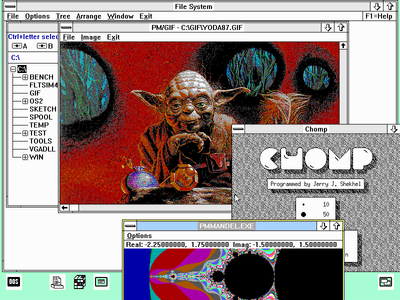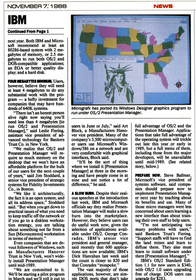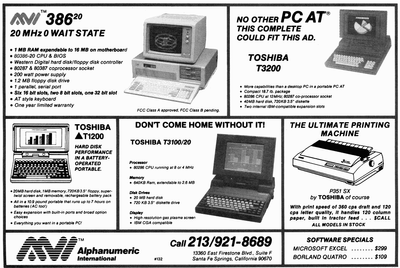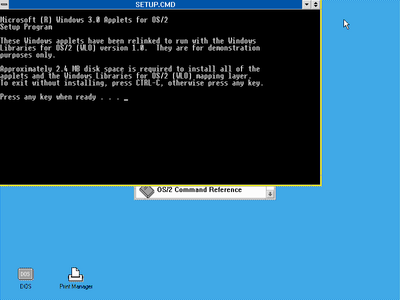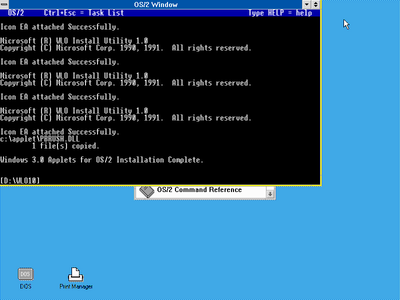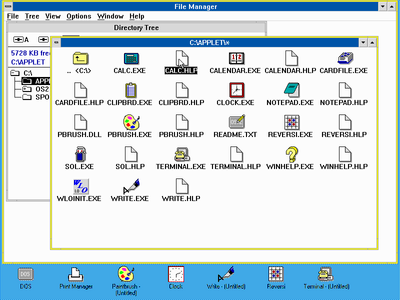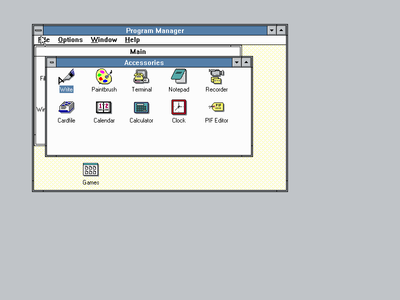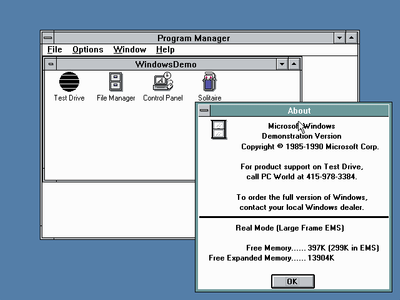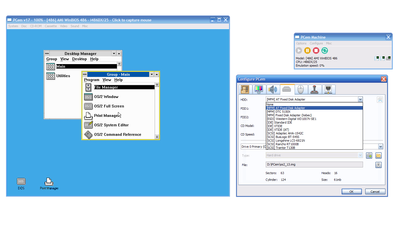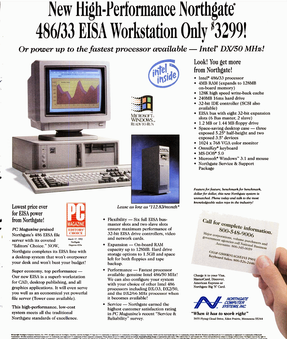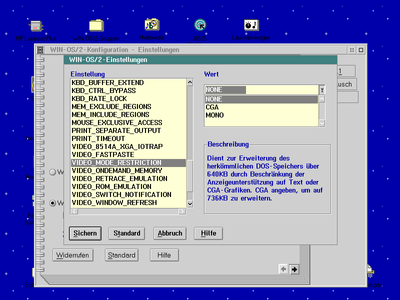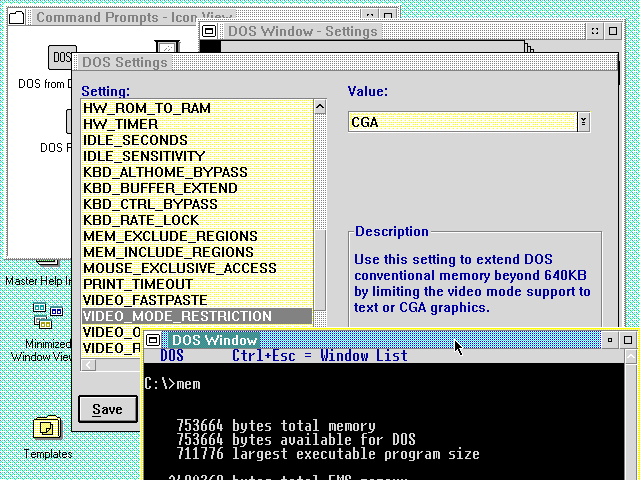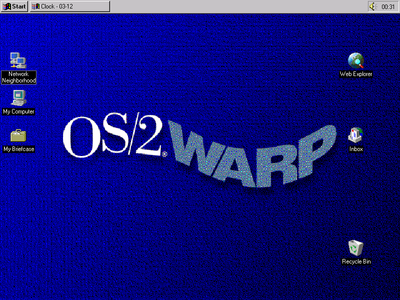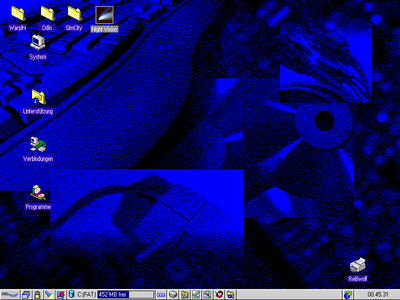the3dfxdude wrote on 2023-03-08, 15:16:
The 386 would have opened up to these high ram systems, but as we have mentioned, ram prices were still fluctuating and crazy in the late 80s.
Yes, that was really a bad accident. I had no idea it was that bad, to be honest.
The PCs released in 1985/1986 all had 640KB standard (or planned as a standard) and didn't make a fuss about 1MB of RAM.
That's when my father bought a lot of DOS software and PC hardware, also.
By the late 80s, he was busy moving to another city, so he likely missed the effect of the crisis.
The 1MBit production problem really was a back-throw to the whole digital industry, I suppose.
Interestingly, East Germany had a similar issue. They were trying to upgrade production facilities from 256kbit to 1MBit.
The process was somewhat resource hungry, that it harmed the 256kbit production.
There's an interesting video about it (How Semiconductors Ruined East Germany).
If you're curious about x86 and Z80 PCs from "the other Germany", please have a look at https://www.robotrontechnik.de/
Google Translator can help - it also has screenshots of the weird East German Windows 3.0.
Funny, isn't it ? Windows 3.0 was running like a continuous (red) thread throughout all PC history. 😁
https://www.robotrontechnik.de/index.htm?/htm … systeme.htm#kws
Even to me, as an ex-western neighbor, it's quite a trippy roller coaster ride.
Personally, I find those PCs quite good! The built-quality was fine, and their "ISA" connectors were professional, too.
Some even had Super CGA, sort of. They used the same video chips used by NEC in Japan.
More information (links) in an older thread of mine: Emulation of x86 PCs of former East Germany?
Sadly, the few former East Germans I talked to do have very little interest about in own creations of the past.
They either don't believe they had those PCs, or they play down their value. Sad, I think. They had good, skilled engineers.
But for some reason, they still believe that everything in "the golden west" was better than theirs. 🙁
If they only knew that many wonderful presents they got from their western relatives were in fact their own products.
Quick backstory: Here in W. Germany, there used to be three big and reputable mail order companies: Quelle, Otto, Neckermann.
They had about everything in their printed catalogues. From what I know, Quelle (German for "source") did import products from East Germany.
After import, many of those products were re-labeled and sold in their own catalogue.
The neat thing about those companies was, that you could send things back you didn't like and that you could pay via installment payment.
This was an alternative paying method to using credit cards, essentially. Credit cards were never really popular over here.
Business people and travelers had them, of course. Many ATMs also supported them, in addition to bank cards. Mainly for travelers or tourists.
Speaking of Quelle, it was one of the earliest companies in the country with an online shop, afaik.
It started it in the late 80s and was accessible via BTX, our version of French Minitel.
Essentially, you could buy things in a similar way to Amazon or eBay in our modern day.
I remember it, because a TV show for children featured actual footage of a beige IBM PC or AT connected to BTX/Quelle.
It was this one here. The main character was constantly buying useless stuff online in incognito, because she was non-human (like ALF). 😁
the3dfxdude wrote on 2023-03-08, 15:16:
And that really stunted OS/2, didn't it? .
Um, I think so, yes. 🤷 For sure I can say it did at least delay OS/2 long enough until Windows 95 took over the market.
Here in my place, OS/2 2.x had at least gained a notable popularity among PC enthusiasts.
Which in turn continued to live on into the Warp 3 days. But I can't remember exactly when things went down hill.
I vaguely remember that OS/2 Warp was sold pre-installed with PCs made by Escom and Vobis, two major PC distributors.
Microsoft was really p*ssed about it at the time. 😜 If not a bit shocked or traumatized (since they dared to refuse paying the MS "tax").
To MS it was as if Dell suddenly started to ship PCs with the latest macOS instead or something. 😁
Unfortunately, those PCs with OS/2 did merely have the minimum 4 MB of RAM. Not a great user experience.
In the 1991-1994 time frame, approximately, OS/2 was considered a real competitor over here to Windows/DOS.
In that time, both the good old memories of OS/2 1.3 and the latest news about the great new 32-Bit support were still fresh.
To all the people who struggled with DOS and Windows 3.0, OS/2 was seen as a way out of that mess.
That's why OS/2 was being advertised as "Migrationsplattform" (migration platform) in various PC magazines around the time.
Thanks to the emulation/virtualization features of OS/2's DOS VMs, many things worked that previously failed.
For example, it was possible to give DOS-based compilers and other command line utilities up to 736 KB of conventional memory, on any PC!
All it needed was a simple mouse click in the options of the DOS support (it was done by restricting video modes to CGA, essentially).
And such a setting could be used both globally and application-specific (PIF files).
And as long as Windows 3.x applications were still #1, OS/2 was on par with its built-in Win-OS/2.
OS/2 even supported long file names at the time. On DOS-formatted floppy disks, it stored them in EA files.
When Win32s applications for Windows 3.1x appeared, OS/2 started to struggle a bit.
While Win32s 1.25 was successfully patched to work on Win-OS/2, programs with need for the more finicky Win32s 1.30 appeared soon.
That's when things got a bit unstable, I think. The increasing use of VXDs as DLLs in Windows applications also caused some headaches.
WinG and other extensions worked quite okay, though. Except DCI, maybe, have to check.
All in all, I think that the end of Windows 3.1x as the dominant PC platform also marked the end of the OS/2 days.
the3dfxdude wrote on 2023-03-08, 15:16:
There is another recent thread on vogons where we looked into high ram systems on the 386,
and while we determined something like 128mb was possible, it would have been insanely expensive.
Makes sense. Normal users (us mortals, so to say) had no urgent need for such an amount of RAM at the time.
But considering the fast PC evolution in the 1990s, no one was sure about the technological development, maybe.
So the chip sets were being made to support that amount of memory, just in case. 🤷
On the other hand, if something revolutionary or innovative like "bubble memory" really had been taken off at the time..
Then maybe we would have had gotten very cheap RAM with high capacity, passing the 1GB mark by 2000s.
https://en.wikipedia.org/wiki/Bubble_memory
..
The 90s were a weird time, I think. So many things came and went in a blink of an eye. I'm just learning about many of them, in fact. 😅
By 1992, clumsy "old" Windows 3.x was perhaps very beloved because it "just worked" most of the time and provided a form of hardware-abstraction to what
both users/developers felt to be an ever changing IT environment with an uncertain future (with a mood similar to what viewers experienced in the first two Terminator movies).
With a Windows application, you simply had a peace of mind. You knew your applications would run for the next years on the most obscure hardware, including RISC.
Interestingly, Linux/Android/Java play a similar role these days. They act as a device driver package+runtime combo to the applications.
Speaking of the late 80s/early 90s, I can't help but feel that I must say that I feel that the business climate was different, more relaxed.
Here in Germany, companies like Microsoft or Nintendo had "just" freshly opened their new outlets (okay, MS was here since '83, but big N appeared in '90).
Not sure why. Maybe because it was a good location to do business at the time, not sure. 🤷
Or maybe it was just a symbolic thing (being on very edge to west-east, then the fall of the iron curtain, the reunion).
Anyway, the companies were were friendly/helpful towards all kinds of business partners at the time.
You could ask for free advertising material, catalogues, for SDK stuff (print outs/listings of undocumented API functions) etc.
Even if you were just a one-man company, essentially. The time was a weird cross of 80s/90s mentalities, afaik.
I suppose that's why Microsoft products were so popular here, they had good "end-user" support without the need for having a lawyer at your side. 😉
Many developments, both commercial and in-house applications were made for the Microsoft platform back then. Or so it seems to me.
That's why OS/2 2.x had such a potential over here, I think. It could integrate all sorts of applications easily (in theory).
To give an idea, all of our then-new and then-fancy ISDN stuff was made with Windows-like PCs or special hardware in mind.
Here's an old 1992 video (meant for the Telekom employees ?) about the shiny new world of ISDN, if you look closely, you see Windows 3 on some PCs.
It was probably required for operating those installed ISDN cards (ISA) at the time. On plain DOS, there perhaps was no API/driver available. It's just a guess, though. 🤷
https://youtu.be/1lYFr-C_SKg?t=836
OS/2 2.x had a real chance to integrate itself into this ecosystem, I think. If it only was less stiff. Plug&Play, APM, PCI, ATAPI CD-ROM drives (just created)..
That's something that OS/2 had trouble with. Being a direct OS/2 1.x descendant, it still expected 1980s-era hardware and early interfaces (SCSI CD-ROMs, Mitsumi Lu005s interface card etc).
It catched up, eventually. But it was late. By the time OS/2 3.0 was around (1994), the betas of Windows 95 were already out and the press wrote about them.
If only OS/2 2.0 in 1992 would have had the same feature level like Windows 3.1 had right from the start (APM, MIDI/audio/video, both 16+32-Bit drivers, nice screensavers)..
But that wasn't the case. OS/2 2.0 was late due to the IBM/MS divorce and it was functionally very close to Windows 3.0 still (okay, but not great).
32-Bit graphics drivers (non-GRADD) and the MultiMedia Presentation Manager (MMPM/2) were provided as updates over the next two years (in the OS/2 2.1x life time).
By comparison, Windows 3.0 with Multimedia Extensions 1.0 (Win3 MME) was around since late 1991 (to OEMs).
And the magic screensaver, a predecessor to AfterDark, was around even earlier in the Windows/386 days.
https://www.youtube.com/watch?v=gCV8OPVY-uE
On the other hand, to OS/2's defense, it got GRADD graphics drivers by the release of Warp 4 (it had VESA VBE support before Windows).
Their capabilities were better than what Windows had at hand at the same time ('96; Scitech and other companies had worked on GRADD).
The early Windows 95 RTM used simplified 3.1 drivers, essentially, with their GDI components stripped out and no DirectX support yet.
GRADD (Graphics Adapter Device Driver) in turn was a completely new development, a left over from the PowerPC port of OS/2.
http://www.os2museum.com/wp/display-drivers-o … 16-bit-windows/
http://www.os2ezine.com/v3n04/gradd.htm
DIVE (Direct Interface Video Extension), a DirectDraw or WinG style API, also was added a bit earlier to OS/2 in 1994. It was meant for OS/2 2.11 and 3.0, afaik.
Also, the OS/2 team further optimized the OS for low-end hardware (386SX, 4MB RAM), maybe with laptop users in mind.
https://stuff.mit.edu/activities/os2/diverepo.html
the3dfxdude wrote on 2023-03-08, 15:16:
By this point in 1992, it would have been definitely cheaper, making interest possible for 2-4mb for a base system.
I have a 486 that can take 128mb, and would be especially nice if it had the correct tag and cache ram for that.
Cool! I would love to see that one day! 😀 👍
the3dfxdude wrote on 2023-03-08, 15:16:
And at least compaq, it would have been proprietary modules too.
Oh yeah, Compaq! They were always proprietary! 😁 I'm still "happy" about their hidden HDD partitions with the CMOS Setup program.
I "fondly" remember upgrading my Compaq SLT 286 laptop to 4 MB of RAM by installing those proprietary SIMMs!
It worked, but was quite some work. Windows 3.1x ran nicely on it afterwards, though.
I wonder what RAM it was (FPM ?) and how quick (70..120ns?)
the3dfxdude wrote on 2023-03-08, 15:16:
But yeah for the home user, 2-4mb systems were starting to become common,
although there was still one low end 386sx system I saw in there that sold base with just 1mb still then!
I know, the 386SX systems were really low-end by default; meant to replace existing 286 PCs.
Maybe they were former 286 PCs with just their motherboard swapped. 🤷
the3dfxdude wrote on 2023-03-08, 15:16:
I mean that's what alot of us (including me) were still running only 1mb in 1992.
But I still remember what a game changer having more ram allowed with windows, and a few new games...
Anything more than 4mb then was a crazy large amount for a home user.
That's understandable, from the perspective of the end user/private user.
PCs sold in shops were really made for running DOS, Norton Commander, PC-Tools and such things.
For running a single application at a time, in short. Okay, strictly speaking, DOS-(S)hell had a program switcher, but..
When a friend of our family bought his first PC in the 90s, the seller said to him "2MB! More than you will ever need!".
For programmers (aka software/hardware developers), which wrote the software that people at home used, it was a bit different, of course.
From what I learned from my father's Windows C programming books (1990-1993), the specs were like this (please fasten your seat belts):
Minimum: AT 80386 with 25 MHz, 2 or 4 MB main memory, 80 MB HDD (< 28ms access time), VGA graphics
"Optimum": AT/EISA 80386 with 33 MHz, 4 MB main memory, 120 MB HDD (< 18ms access time), Super VGA graphics
High-end (high comfort): AT/EISA 80486 with 33 or 50 MHz, 8MB of main memory or more, 200 MB SCSI or ESDI HDD (< 18ms access time), Super VGA graphics
If someone did raytracying in POVRay or used a good astronomoy software, such a setup wouldn't have been unwelcome, either. 😉
But of course, that's not exactly "normal", either. These are/were niche hobbies, at least in relation to the population or all PC users.
Since you mention 4MB (like in the article screenshot above).. It was one of those magic numbers, essentially! 😀
Okay, I do knowingly misuse the term here a bit, but it often appears in IT. 😁
4 MB was the maximum of memory for early 286 chip sets, it was the maximum amount Video RAM of popular PCI video cards (S3 Trio etc),
the basic amount of memory used by the 3dfx Voodoo card, the minimum memory needed by OS/2 for serious work, the size of the N64 memory pak etc.
When Windows 95 came along, many existing PCs apparently had just gotten their huge, expensive 4MB upgrade for running Windows (3.1) nicely. How mean! 😁
I noticed this when I got second-hand PCs for little money by the end of the 90s (as a long-time 286 user I was very curious about 386/486 PCs).
Many of these old PCs had between 4 and 12 MB installed. And Windows 95 on the HDD, probably due to the Windows 95 hype of the 90s.
Especially 486 laptops were rarely ever upgraded past 3 or 4 MB, at the time, which was sad. Okay for Windows 3.1, but not much else.
Unfortunately, Windows 95 really crawled on those PCs with just 4MB.
Funnily, Windows 3.1 in Standard-Mode, however, was requiring less memory for good performance than Windows 95 or Windows 3.1 in 386 Enhanced-Mode.
I noticed this when I replaced the old Windows for Workgroups 3.11 installation by plain old Windows 3.10.
When I forced it running in Standard-Mode (WIN /S) just for fun and due to nostalgia (long-time 286 user..), it was quicker than usual (WIN).
Pictures loaded faster in Paintbrush, Win File draw the directories more quickly etc.
Probably because virtual memory was not used and because Standard-Mode Windows had plenty of free space in those 4MBs.
With SmartDrive loaded, the 32-Bit HDD driver enabled etc., 386 Enhanced-Mode Windows could have had made up for it, performance wise, perhaps.
